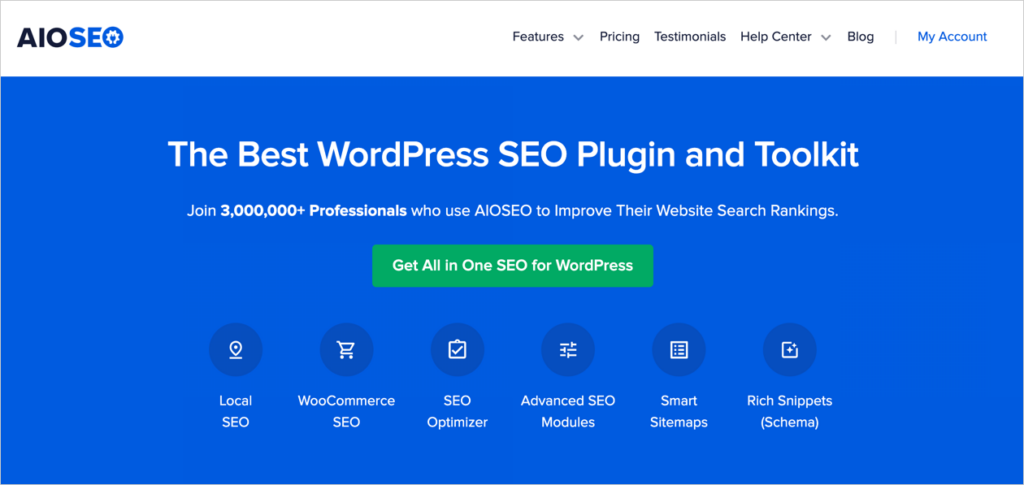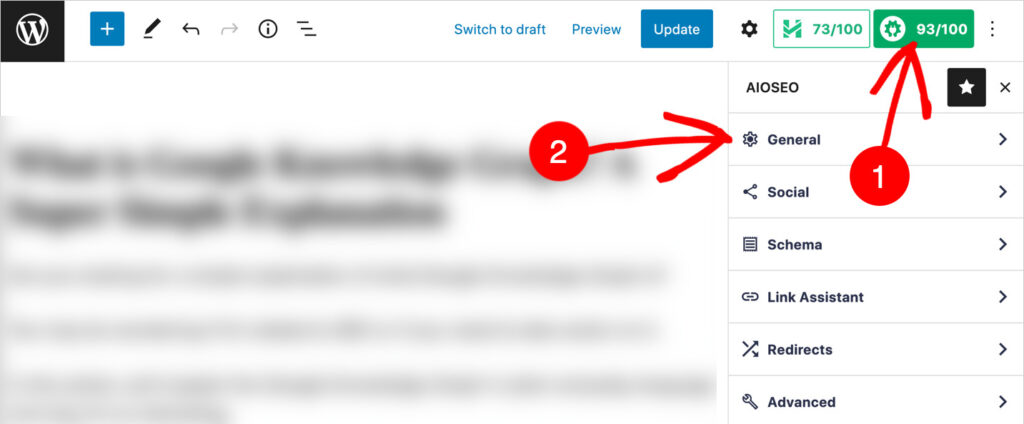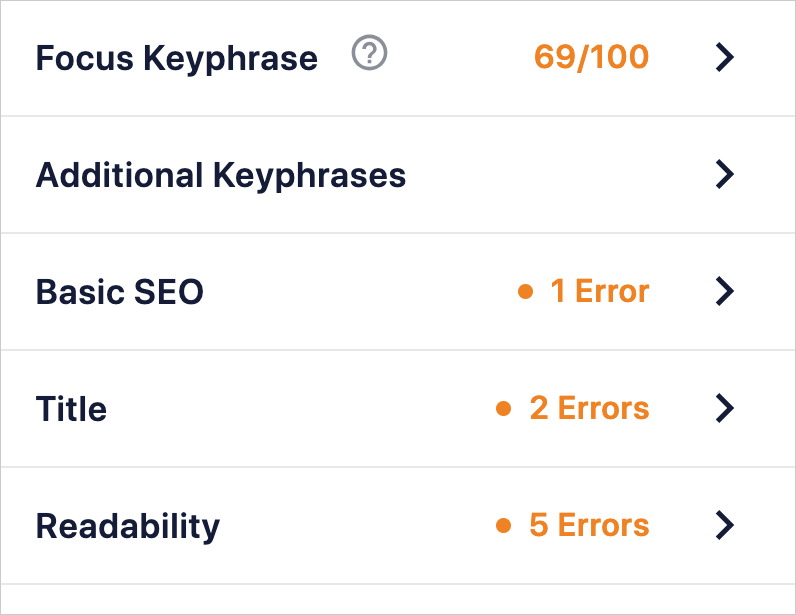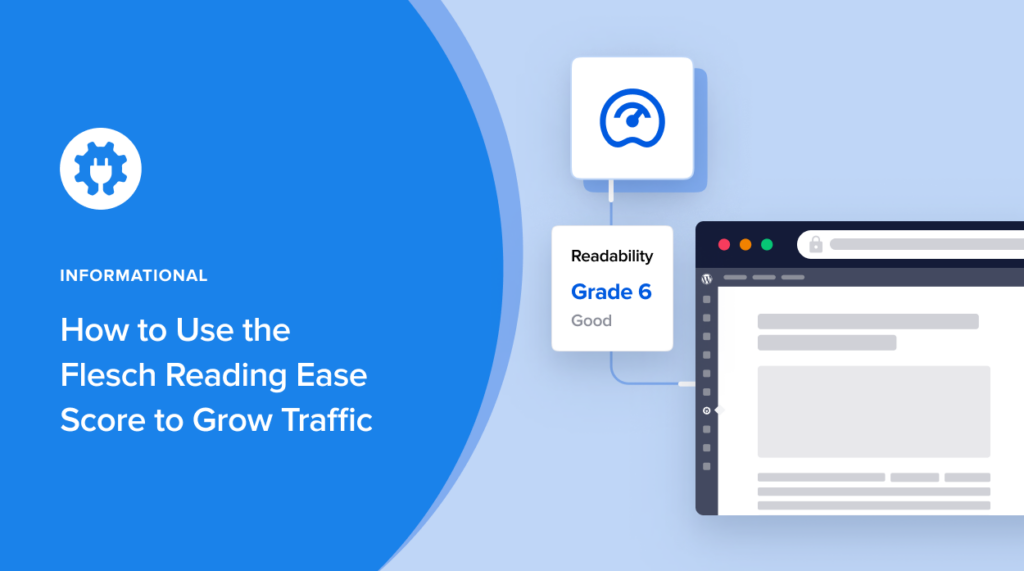Looking for a simple explanation of the Flesch reading ease score?
Designed to help people write in plain English, the Flesch reading score is simple to understand and use.
In this article, you’ll learn how to use the Flesch reading ease score to improve your content so it leads to more conversions.
In This Article
What is the Flesch Reading Ease Score?
The Flesch Reading Ease Score, measured out of 100, indicates how easy a text is to understand.
- A high score means the text is easy to understand.
- A low score means the text is hard to understand.
The score uses a formula that measures word and sentence length. It also counts the average number of syllables in words.
To get a high score, use simple words and short sentences. That way, more people can understand what you’ve written.
Created by Rudolf Flesch, an Austrian immigrant to the U.S., this reading score is widely used by institutions and marketers.
In 1975, the United States Navy hired Flesch and J. Peter Kincaid to develop a second test. This test would assign a grade level to texts based on the reading ease score. The goal was to improve the readability of Navy manuals.
This second test was called the Flesch-Kincaid grade level score.
Over time, people began associating the Flesch reading ease score with the corresponding grade levels.
Flesch-Kincaid Grade Level Chart
The table below matches Flesch’s reading ease scores to corresponding grade levels.
The 3rd column includes Flesch’s descriptors of reading ease, taken from the 2nd chapter of his book How to Write in Plain English.
| Reading Ease Score | Reading Grade Level | Easy to read? |
|---|---|---|
| 90-100 | 5th grade | Very easy |
| 80-90 | 6th grade | Easy |
| 70-80 | 7th grade | Fairly easy |
| 60-70 | 8th – 9th grade | Plain English |
| 50-60 | 10th-12th grade | Fairly difficult |
| 30-50 | College | Difficult |
| 0-30 | College Graduate | Very difficult |
If you are writing for a general audience, a score of 60-70 (8th or 9th grade) or above is a good target.
The goal is to match your writing to your audience. So the ideal reading level may differ depending on your target audience.
How to Use the Flesch Readability Score to Improve Your Content
Rudolf Flesch wanted to help people write in “plain English.” And he had some advice.
“If you want to learn how to write Plain English, you must learn how to use a readability formula,” Flesch wrote.
His formula, developed in the early 1940s, was time-consuming to apply. But today you can get a Flesch reading ease score with a button click.
Here’s how.
Step 1: Download and Install All in One SEO (AIOSEO) Plugin
We recommend downloading and installing the All in One SEO (AIOSEO) plugin. This plugin includes a Flesch reading ease score, calculated automatically for each web page.
In addition, the plugin will give you specific recommendations for improving your web pages’ readability.
Using the plugin takes much of the guesswork out of creating content that performs well.

All in One SEO is an established plugin with thousands of 5-star ratings on WordPress.org. More than 3 million people are using the plugin.
Questions? Follow the installation instructions.
Step: 2: View Readability Recommendations
While you’re logged into WordPress, navigate to a page.
Then, open the plugin sidebar by clicking the AIOSEO button at upper right.
Then click on General.

Now you’ll see recommendations categorized by:
- Focus keyphrase
- Basic SEO
- Title
- Readability

Click on Readability. Now you’ll see details.
In our example below, we can see what we got right.

And we see what we can improve.

Did you see the Flesch reading ease score at the bottom? We scored 51.5, which means our article is “fairly difficult to read.”
We have 4 items to improve.
- Use of passive voice
- Lack of transition words
- Consecutive sentences that begin with the same word
- Not enough subheadings.
Subheadings are also called headings or headers.
Step 3: Improve Readability
To act on these recommendations, we did the following:
- We found a long passage without a subheading and added one.
- We changed instances of the passive voice to the active voice.
- We found a few sentences that began with the same word and fixed those.
Let’s see what difference that made.

We fixed 3 items, which boosted our Flesch reading ease score to 76.6, which is what Flesch called “plain English.”
And we made a note to include more transition words in future articles.
3 Simple Tips to Boost Your Flesch Reading Ease Score
Here are 3 ways to improve your Flesch reading ease score.
- Break long sentences into shorter ones.
- Remove all unnecessary words.
- Use simple words.
How Do All in One SEO’s Readability Checks Work?
Curious how All in One SEO (AIOSEO) measures each readability item and why?
Here are the checks that AIOSEO performs, along with their rationale.
- Images/videos in content: If there are none, the plugin will recommend adding relevant media. Visuals can break up walls of text and make your content easier to scan.
- Paragraph length: Target: 120 words maximum. Usability tests have proven that long paragraphs are hard to read on screens.
- Sentence length: Target: 20 words. All in One SEO checks for excessive sentence length. Long sentences are hard to read on screens.
- Passive voice: AIOSEO checks for passive voice use and will recommend using the active voice instead. Use of the active voice is a feature of good writing.
- Transition words: These improve the flow between content sections, which is why AIOSEO checks for their presence. (Read more on transition words.)
- Consecutive sentences: The plugin checks for instances where you’ve used the same word to begin 2 sentences (or more) in a row. This type of repetition is considered a feature of poor writing.
- Subheading distribution: This check looks for use of subheadings to break up content into logical sections. Descriptive subheadings help users scan and read more easily on screens.
- Flesch reading ease test: Our calculator displays your content’s Flesch reading ease score along with a description, e.g., “difficult to read.” Your score increases as you act on the plugin’s recommendations, reinforcing good writing habits.
Does Readability Impact SEO?
No, readability alone is not a ranking factor; however, it is related to quality of content, which is the most important ranking factor.
When your content is easy to scan and read on screens, people will spend more time reading it. And that can lead to repeat visits, and increased conversions.
Some articles on readability suggest that it reduces bounce rate, and because of that, boosts your SEO. That’s incorrect because bounce rate isn’t a ranking factor.
The Flesch-Kincaid Formulas
Remember the U.S. Navy job that Rudolf Flesch and J. Peter Kincaid took on? Curious about their readability ease formula or others they used for calculating grade levels?
Flesch Reading Ease Formula
The reading ease formula counts the average number of words in a sentence and the average number of syllables per word.
Created by Rudolf Flesch for his dissertation thesis, this reading ease formula was revised in 1948 as follows. (Source: University of Twente).
RE Score = 206.835 – (1.015 x ASL) – (84.6 x ASW)
- RE = Readability Ease
- ASL = Average Sentence Length
- ASW = Average Syllables per Word
The total number of sentences is part of the Flesch-Kincaid Grade Level formula.
You can find more about their formulas and processes in this 1975 U.S. Navy document.
The Flesch Reading Ease score is sometimes referred to as the Flesch readability scale.
Q&A on Readability
What is the average American readability level?
The majority (54%) of American adults have a reading proficiency at the 5th grade or lower. Put another way, over half of Americans “lack literacy proficiency,” according to Gallup. This fact highlights the importance of Flesch-Kincaid readability scores for institutional or commercial content aimed at a general American audience.
What are the best-known readability assessment tools?
The best-known readability assessment tools include the following tests. Note that these differ in the way they calculate readability scores.
- The Flesch-Kincaid readability tests
- The Gunning Fog Index
- The Automated Readability Index
- The SMOG Readability Index
- The Coleman–Liau index
In addition, many software programs, like Microsoft Word, include readability tests.
Summary: Flesch Reading Ease Score
As you act on All in One SEO’s automated readability recommendations, you’ll get higher scores with fewer changes needed.
In this way, the plugin will train you to pay attention to the features of good writing.
But remember to consider your target audience’s education level. A lower score may be suitable for a well-educated audience.
And a middle-range score of around 50-60 is suitable for U.S. high school reading levels.
What’s Next?
We hope this post helped you understand the Flesch reading ease score. You’ve seen how easy it is to use the score to improve your content. And high-quality content, matched to your target audience, can help you achieve your website goals.
Next, explore George Orwell’s 6 rules for writing and check out our copywriting tips.
If you found this article helpful, then please subscribe to our YouTube Channel. You’ll find many more helpful tutorials there. You can also follow us on Twitter, LinkedIn, or Facebook to stay in the loop.
Disclosure: Our content is reader-supported. This means if you click on some of our links, then we may earn a commission. We only recommend products that we believe will add value to our readers.


Alngkah baiknya dan alngkah mudahnya jika keterangan di atas di peraktekan langsung berupa video
Samaul – Itu ide yang bagus. Kami memiliki saluran YouTube dan akan segera membahas topik ini. Terima kasih atas tanggapan Anda.
(The commenter suggests, in Indonesian, that the information be made available in a video. Our reply: That is a good idea. We have a YouTube channel and will be covering this topic soon. Thank you for your feedback.)